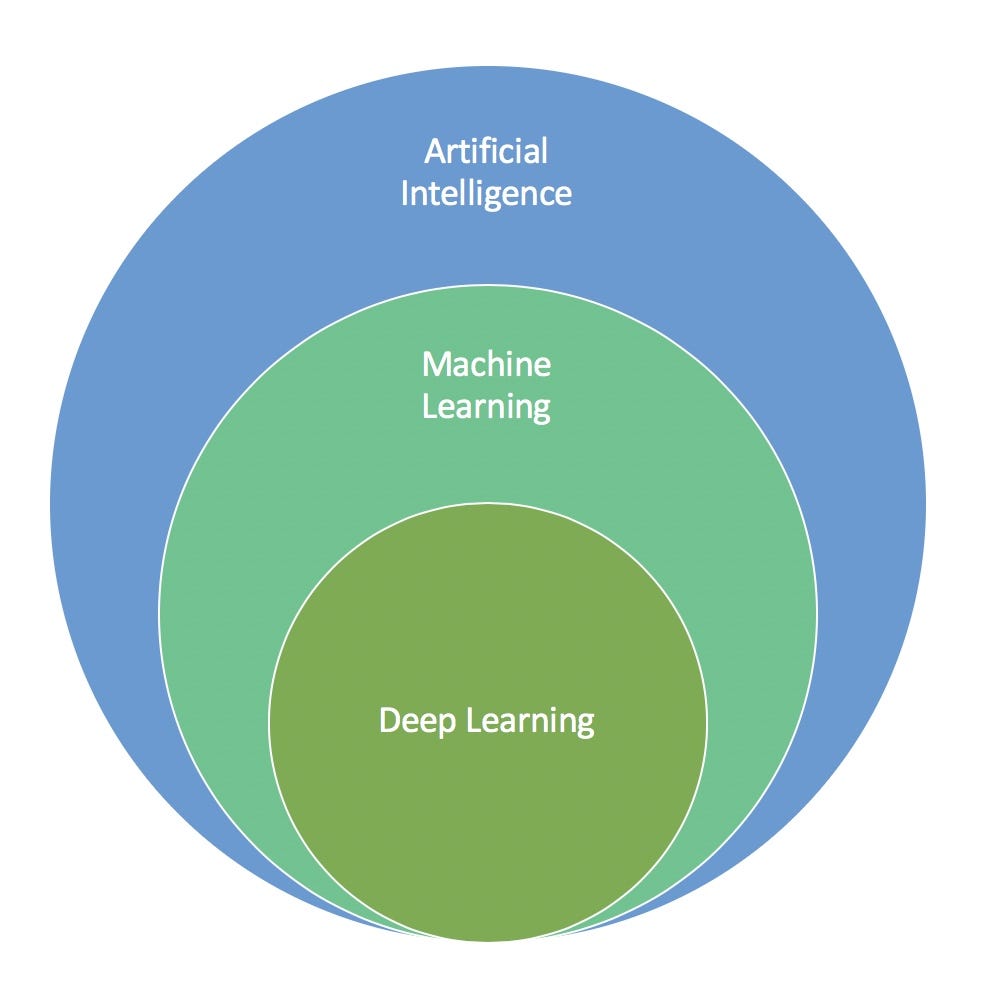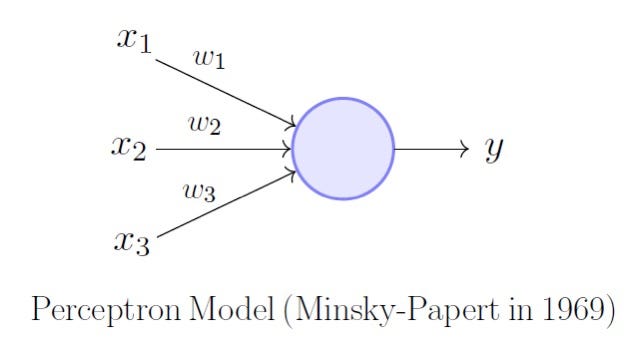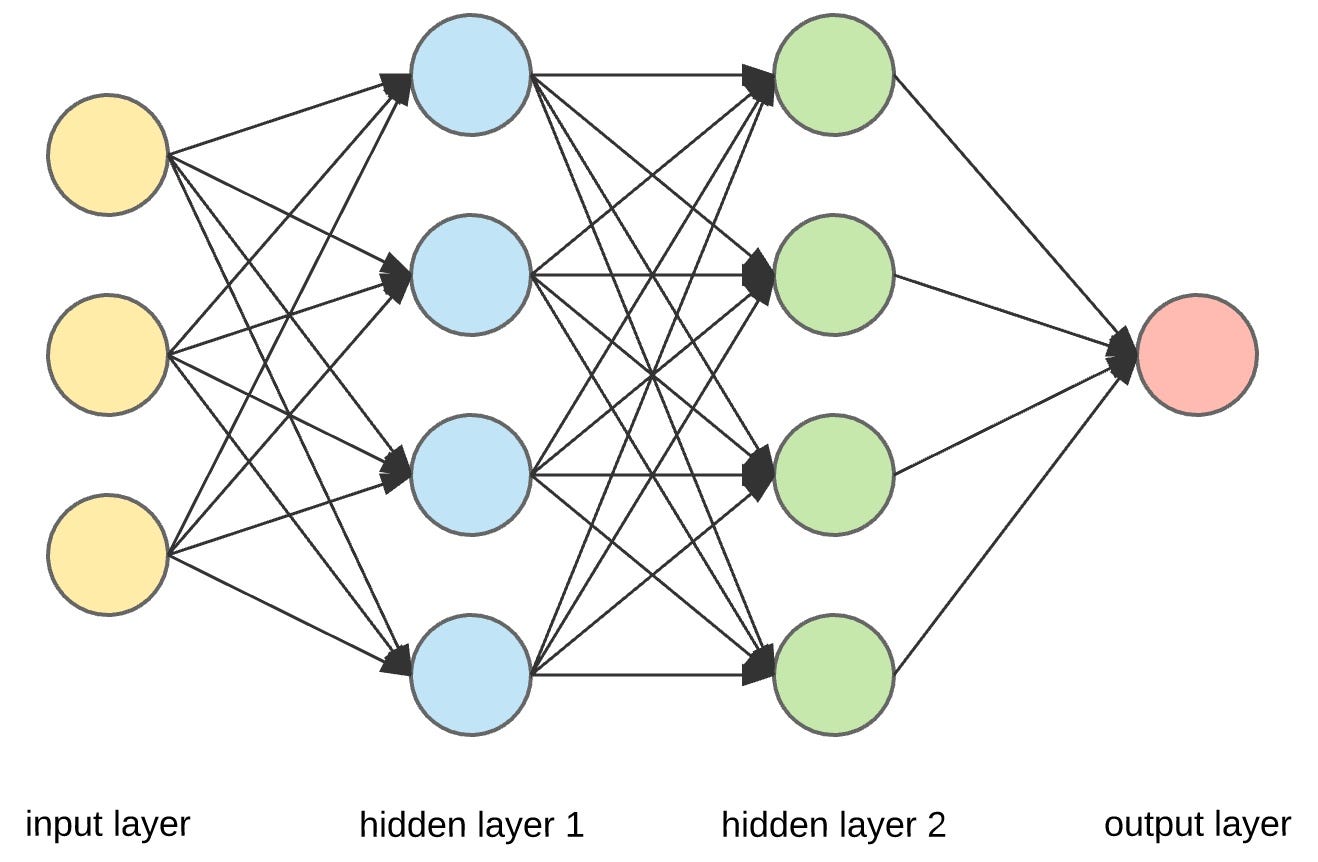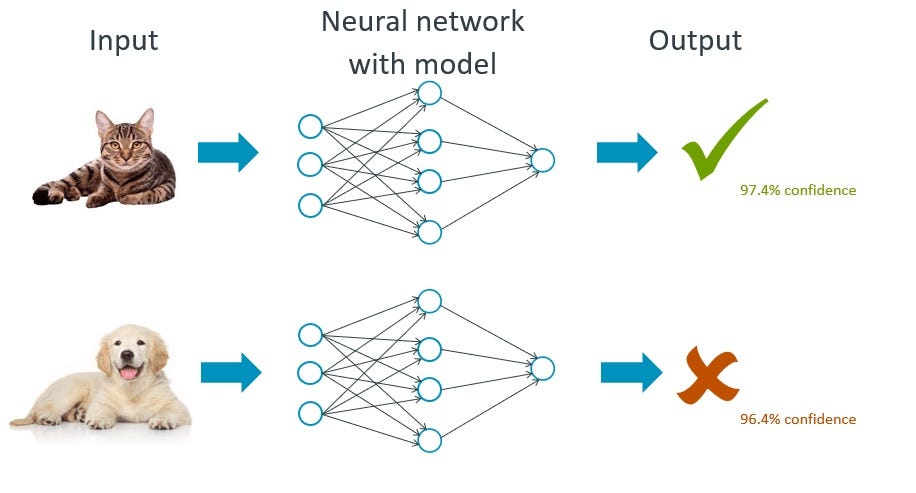Artificial Intelligence will change lives. It will change the economy. It will change the world. Period. You hear about it on the news and you see Google and other tech companies come out with this ridiculously advanced products which make you think “Oh god, in 20 years I’ll have a terminator roaming around in my neighborhood”. Now, while I can’t say that that won’t happen I can at least say that this is not at all the case with today’s technology. Right now AI (Machine Learning more specifically) is just the wonderful love child between Computer Science and Calculus, not the predecessor to a terminator. So, with that said:
人工智能将改变生活。 它将改变经济。 它将改变世界。 期。 您在新闻中听到了这一消息,并且看到Google和其他科技公司推出了这种荒谬的高级产品,这些产品使您认为“哦,天哪,二十年后,我将在附近漫游一个终结者”。 现在,虽然我不能说那不会发生,但我至少可以说,今天的技术绝不是这样。 现在,AI(更具体地说是机器学习)只是计算机科学和微积分之间的奇妙爱情之子,而不是终结者的前身。 所以,说:
什么是人工智能? (What is Artificial Intelligence?)
AI, from a technical perspective, is any piece of software or algorithm that emulates some sort of intelligence. There are many different ways that scientists have achieved this. AI could be a set of hard coded rules that simulate some sort of logical reasoning, or it could be a set of instructions for how a video game character might behave. However, the AI that you see today, on your phone as an assistant for example, is powered by Machine Learning, and in the most impressive cases of AI it is most likely powered by Deep Learning.
从技术角度看,AI是模拟某种智能的任何软件或算法。 科学家实现这一目标的方式有很多。 AI可以是一组模拟某些逻辑推理的硬编码规则,也可以是一组有关视频游戏角色行为的指令。 但是,例如,您今天在电话上看到的AI是由机器学习提供支持的,而在最令人印象深刻的AI案例中,它很可能是由深度学习提供支持的。
See, Artificial Intelligence is a concept that encompasses a bunch of different methods and technologies. Machine Learning is one of them. And, inside Machine Learning there are a lot of other techniques, one of them being Deep Learning. You can think about it like this:
可见,人工智能是一个包含许多不同方法和技术的概念。 机器学习就是其中之一。 而且,在机器学习内部,还有许多其他技术,其中之一就是深度学习。 您可以这样考虑:

So, now…
所以,现在…
什么是机器学习? (What is Machine Learning?)
ML is a technology or a set of algorithms that learn from data. With a Machine Learning algorithm a computer can analyze a dataset and learn the patterns within it.
ML是从数据中学习的一项技术或一组算法。 使用机器学习算法,计算机可以分析数据集并学习其中的模式。
Machines Can Learn from Data
机器可以从数据中学习
This is part of the reason why data is considered so important now a days. The more data a computer consumes, the more it can learn its patterns and relationships using Machine Learning. Therefore, if a computer has a good ‘understanding’ of a dataset, it can start to ‘intelligently’ make predictions about it.
这就是为什么现在认为数据如此重要的部分原因。 计算机消耗的数据越多,使用机器学习就可以了解更多的模式和关系。 因此,如果计算机对数据集有良好的“了解”,则可以开始“智能地”对它进行预测。
There are two main types of ML:
ML有两种主要类型:
有监督和无监督的学习 (Supervised And Unspervised Learning)
With Supervised Learning we feed a computer data that is labeled, a dataset that contains a set of data-points each associated with a particular label for example. Such as a dataset of houses consisting of data-points to describe the # of rooms, # of bathrooms, etc… and a label which describes the house’s price. If this dataset is then fed to a computer running a Supervised Machine Learning algorithm it can learn to predict what the price of some new house, whose information the computer has never seen before, will be.
借助监督学习,我们可以提供带有标签的计算机数据,该数据集包含一组数据点,每个数据点都与特定的标签关联。 例如,房屋数据集包括描述房间数量,浴室数量等的数据点,以及描述房屋价格的标签。 如果将此数据集输入到运行有监督的机器学习算法的计算机,则它可以学习预测一些新房的价格,而这是计算机从未见过的信息。
With Unsupervised learning, however, we give the computer an unlabeled dataset and allow it to figure out how to label it. This might seem like a much more powerful technique, but it’s much more difficult to do.
但是,在无监督学习的情况下,我们为计算机提供了一个未标记的数据集,并允许其找出如何对其进行标记。 这似乎是一种更强大的技术,但要困难得多。
Although, Machine Learning on it’s own didn’t prove that powerful to emulate intelligence when it came to much more complicated data and so… Deep Learning was born.
虽然,机器学习本身并不能证明它在处理更复杂的数据时具有强大的仿真智能的能力,所以……深度学习诞生了。
深度学习简介 (The Introduction of Deep Learning)
Back in the mid 20th century some very smart people started to wonder what the best way to emulate intelligence would be and that naturally led to the question: “Hey, what’s the most powerful form of intelligence we know of?”. The answer, of course, being:
早在20世纪中叶,一些非常聪明的人就开始怀疑仿效智能的最佳方法是什么,这自然引发了一个问题:“嘿,我们知道的最强大的智能形式是什么?”。 答案当然是:
Our Brain!
我们的大脑!
And so the first attempts to model our brain in a mathematical way started to come to fruition.
因此,第一次以数学方式为大脑建模的尝试开始取得成果。

感知器 (The Perceptron)
The perceptron was the model that arose from trying to recreate a neuron from our brain. From what our high school biology classes tell us, a neuron has multiple inputs from other neurons and based on these inputs the neuron either fires off or it doesn’t. As you can see from the image above, the same idea applies. The perceptron has some inputs and then based on those inputs it gives a certain output.
感知器是试图从大脑重建神经元而产生的模型。 根据高中生物学课告诉我们的,一个神经元有来自其他神经元的多个输入,根据这些输入,神经元要么触发,要么不触发。 从上图可以看出,同样的想法也适用。 感知器具有一些输入,然后根据这些输入给出一定的输出。
神经网络 (Neural Networks)
So now, we structure these perceptrons in layers and we get something that roughly resembles what our brain looks like. This is how we get the almighty neural network.
因此,现在,我们将这些感知器分层构建,并得到大致类似于大脑外观的东西。 这就是我们获得全能神经网络的方式。

A neural network like this is what’s behind most applications of AI today, albeit in much more complex structures. It takes as inputs various data-points and feeds that data through the network and at the end it outputs some numerical value.
像这样的神经网络是当今大多数AI应用的背后,尽管结构更为复杂。 它以各种数据点作为输入,并通过网络输入该数据,最后输出一些数值。
Through algorithms that take advantage of certain concepts in calculus, it is possible to get neural networks to learn much more complicated patterns in data than what the classical Machine Learning algorithms allowed.
通过利用微积分中某些概念的算法,可以使神经网络学习比传统机器学习算法所允许的数据复杂得多的模式。
For example, if a neural network that was trained to learn the patterns in a dataset of pictures of cats and dogs It will output some value that represents the neural networks confidence on wether the picture that is fed through as an input is a picture of a cat.
例如,如果训练有素的神经网络学习猫和狗的图片数据集中的模式,它将输出一些值,该值表示该神经网络对输入的图片是否是动物图片的置信度。猫。

You can play around with building a neural network and training it to see it’s results with this demo made by the Tensorflow team at Google:
由Google的Tensorflow团队制作的演示可以帮助您构建神经网络并对其进行训练,以查看其结果:
http://playground.tensorflow.org/
http://playground.tensorflow.org/
So, whenever you hear or read the words Deep Learning, now you know it’s very likely referring to neural networks or some of the more complex versions of it, such as convolutional neural networks or residual neural networks.
因此,无论何时您听到或阅读“深度学习”一词,现在您都知道它很可能是指神经网络或它的一些更复杂的版本,例如卷积神经网络或残差神经网络。
Most of the time they will be applied to stuff such as your voice assistant to recognize your speech, or by companies like Google or Spotify to learn what you like and recommend you content you’ll probably enjoy. It’s also what’s behind Tesla’s autopilot.
大多数时候,它们会被应用到诸如语音助手之类的东西上以识别您的语音,或者被Google或Spotify之类的公司所采用,以了解您喜欢的内容并推荐您可能会喜欢的内容。 这也是特斯拉自动驾驶背后的原因。
强化学习 (Reinforcement Learning)
Now, there’s this other branch within Artificial Intelligence which is not necessarily connected to ML & DL, but which can be. Reinforcement Learning offers a different paradigm to create models that can learn the patterns within data that is not strictly as black and white as images of cats and dogs. It is often, and most prominently, used to create agents that can play video games and solve puzzles.
现在,人工智能中还有另一个分支,不一定与ML和DL相关,但可以。 强化学习为创建模型提供了不同的范例,该模型可以学习数据中的模式,严格来说,黑白模式不像猫和狗的图像那样黑白。 它通常(最显着)用于创建可以玩电子游戏和解决难题的代理。
The main idea behind it is defining a reward system specific to the problem at hand and applying an algorithm which learns how to maximize that reward. This approach can lead to some very interesting applications.
其背后的主要思想是定义针对当前问题的奖励系统,并应用一种算法来学习如何最大程度地提高奖励。 这种方法可以导致一些非常有趣的应用程序。
OpenAI, a General Artificial Intelligence company co-founded by Elon Musk, does some of the most impressive work in this field. Check out this video for example, and their Youtube channel for some of the other projects they’ve created:
由艾隆·马斯克(Elon Musk)共同创立的通用人工智能公司OpenAI在该领域做出了一些最令人印象深刻的工作。 例如,请观看此视频,以及他们在YouTube频道上创建的其他一些项目:
自己探索 (Explore It Yourself)
Explore some other projects that showcase just how impressive this technology can be by following these links:
通过以下链接,探索一些其他项目,展示该技术的强大影响力:
Credit goes to everyone who created those demos.
所有创建这些演示的人都应归功于它。
So, to wrap up, Artificial Intelligence is just one big concept which refers to a bunch of different techniques for trying to emulate some sort of intelligence. In most cases it’s neural networks, Deep Learning and Machine Learning what’s behind the applications we see everywhere around us. From where we stand, it’s very unlikely this will transform to Terminators in the future but that doesn’t mean this technology won’t take us to some very interesting places.
因此,总结起来,人工智能只是一个大概念,它涉及试图模拟某种智能的多种不同技术。 在大多数情况下,是神经网络,深度学习和机器学习在我们周围所看到的应用程序的背后。 从我们的立场看,将来不太可能将其转变为终结者,但这并不意味着这项技术不会将我们带到一些非常有趣的地方。
翻译自: https://medium.com/ace-ai/an-introduction-to-artificial-intelligence-946531a2861c




















 783
783











 被折叠的 条评论
为什么被折叠?
被折叠的 条评论
为什么被折叠?








